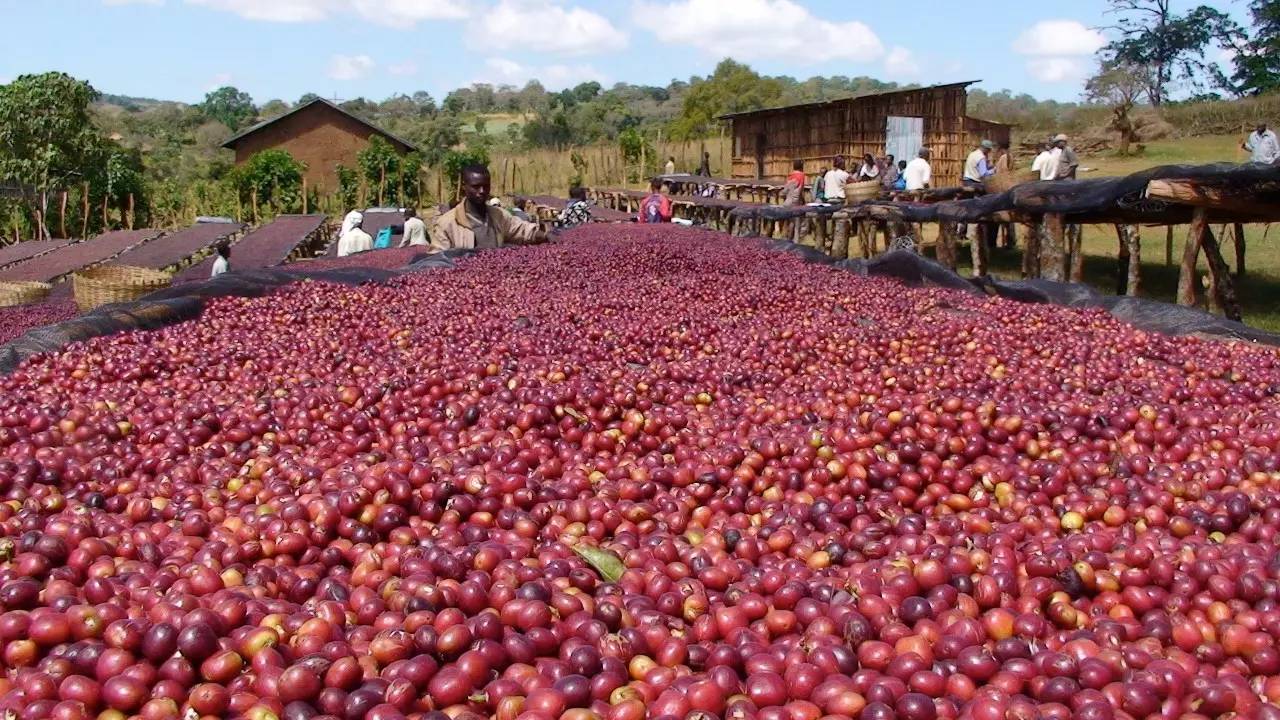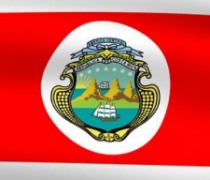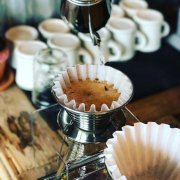Harald Gimar Kim Bilim of Costa Rica Coffee country Sidamo Yega Chuefei
Ethiopia is known as the "land of coffee", not only because it is the birthplace of the world's earliest coffee, but also because it is a place where coffee is everywhere. In this "birthplace of coffee" there is a custom that no matter how poor the common people, their homes will always have a coffee pot and a charcoal stove. Because local people think that all they have to do every day is make coffee. Different from others, they also make coffee in different processes and are very particular about it. Generally speaking, coffee is divided into three courses: because the first course of coffee is still strong, mainly respectful, and is intended for male elders to drink; the second course is for visiting women; and the third course is also the lightest one, which is for visiting children to drink.
This was a custom that they had maintained for so many years. Whether it is because of custom or because of Ethiopia's coffee-producing areas, Ethiopia has really achieved a veritable "coffee everywhere". So, let's get to know the coffee produced in Ethiopia's various coffee producing areas together. In addition to the commonality of "wilderness coffee", they all have their own characteristics.
Ethiopia Coffee Production Area
Harald
Harar is located in the Eastern Highlands of Ethiopia (Haredge Province) and grows at altitudes of 5,000 - 7,000 feet, where it was still wild on hillsides a century ago. Most of the raw beans are medium in size and pointed at both ends. The color is green with yellow or gold. When baked, there will be a strong chocolate smell. The taste is wild with moderate acidity and rich texture. It is a very typical mocha flavor. Good Harald with jasmine flowers and a leavened finish. To some extent, Mattari, which is close to Yemen's Bani Matar district, is better.
Today Harar still uses traditional solarization to process raw beans, usually exported from the nearby town of DireDawa, with an annual yield of about 185000bags/60Kg. Among them, the most common export is Longberry (evolved from the early Arabica tree species) and the specification is G5(Grade5) or G4. Unfortunately, good hala is often smuggled into Yemen and sold as mocha beans at higher prices, as is often the case.
When drinking, in addition to the single product, its rich taste and wine acid can also be used as the base of espresso.
Jima
This gemma, which accounts for about 50% of Ethiopia's annual production, grows between 4,400 and 6,000 feet above sea level in the country's southwestern highlands (where Kaffa and Illubabor provinces meet) and is usually exported as G5/G4.
In recent years, about 10% to 20% of the gemma is used to make up for the lack of flavor of the coffee, but its quality has gradually deteriorated to its own level, but for the coffee buyers there are two opinions. If you use jima alone as the base of espresso, its strong flavor can still be surprising. This coffee, like Harald, follows the ancient method of sun picking, and is also slightly sour but slightly inferior to Harald, with a medium texture and a rough earthy taste.
Ghimbi, Lekempti
It grows in the plateau of western Ethiopia at an altitude of 4900-5900 feet (Wollega Province), north of Jima, mostly wild, with an annual yield of about 500000bags/60kg, mostly exported as G5/G4. The beans are larger and longer than Longberry, green with a little brown, taste similar to less jasmine tea fragrance, more bitter, lack of rising Harar, slightly sour, slightly fruity and wine fragrance but slightly inferior to Harar, but have good texture viscosity, so the beans in the Golden Region are nicknamed "poorman s Harar."
Complex but balanced taste, with a good throat when deep baked, long sweet back, is one of the ingredients many roasters like as a comprehensive bean. Of course, it can also be used as a good item, suitable for drinking after dinner.
Lim
It grows east of Gima and north of Sidama in the south-western highlands of Ethiopia (border of Shewa and Sidmo provinces) at altitudes of 3,600 - 6,200 feet. This coffee is preferred by most Europeans and Americans, mostly washed, and its annual production is about 110000bags/60kg. The bean body is medium, most of them are round (15/16scr), the color is green with blue, and the exit is mostly G2 grade. The taste is similar to Yerba sherry, but the viscosity is thinner, but the floral and fruit flavors are obvious, the acidity is softer than Yerba sherry, the acidity is more irritating, the aftertaste is similar to wine, and the quality is very good and balanced. It is a noteworthy Ethiopian fine coffee after Yerba sherry. But almost all of the rum is vertically integrated for export by Ethiopian coffee organizations, so it is almost impossible to see it in the country.
It is said that this kind is more suitable for air-flow medium baking, not suitable for deep baking, and the best flavor after baking is 2 to 3 days.
Sidamo
It grows on the southernmost Ethiopian plateau between 4,600 and 7,200 feet (Sidamo Province), southeast of Gemma and due south of the capital. It is usually sweeter and more popular than most people, with an annual yield of about 225000bags/60kg. The beans are smaller than Longberry, green with gray. In sidamo's sun-drying yard, coffee is placed in a hemp net rack, and workers take turns to manually stir coffee under sunlight. Sun-dried sidamo is usually labeled as G4 outlet, and washed sidamo is mostly G2 outlet because the processing process is more perfect than sunlight.
Sunlight tastes close to floral, but slightly earthy. Wash it with nutty fruit aromas, with a slight cocoa aroma, but the two have in common a smooth taste and viscosity, pleasant acidity and aroma. Medium roasts are good for single serve, deep roasts are good for blend coffee and a good Espresso base.
Yega Shefi
Yirga is the name of a town in Sidamo, meaning "stable," and Cheffee means "municipality."
It grows in the southern Ethiopian plateau at an altitude of 5,700 - 7,800 feet, in the northwestern Sidamo province, near Lake Abaya. It is usually sweet. It is also preferred by most people, with an annual output of about 225000bags/60kg. The bean body is smaller than Longberry, and the color is green and gray. Most of them are washed. At the washing plant, coffee berries are harvested and fermented in tanks filled with water. Workers use simple wooden harrows to stir them to facilitate washing. The washing plant always has a pungent smell of acid fermentation and the sound of fruits colliding with each other in the sink. After the fruit is thick and soft, it is directly shelled and washed, leaving only the sheepskin coated fruit. After the final washing, the fruit is directly dried outside the washing plant.
The taste is similar to lemon and citrus complex, taste excellent viscosity, complex flavor, sometimes because of its loud name and people have been overemphasized and exaggerated. Most of them are exported as G2, suitable for medium baking as single item.

Important Notice :
前街咖啡 FrontStreet Coffee has moved to new addredd:
FrontStreet Coffee Address: 315,Donghua East Road,GuangZhou
Tel:020 38364473
- Prev

Learn more about one of the most well-organized industries in Costa Rica
Costa Rica means rich coast in Spanish, so Costa Rica is a magical and rich country. The blue of the sea and the green of the forest together paint this beautiful land, 50% of which is covered by primeval forests, known as Switzerland in Central and South America. On the shield of the national emblem of Costa Rica, there is a rising sun rising from the sea, symbolizing the dawn of a new era; Barlois and Ira
- Next

Description of the flavor characteristics of the sought-after Yega Xuefei Kochel
Yirga cheffe Cochelle Kochere jasmine and lemon aromas, bergamot, sweet honey, grapefruit tonality, delicate acidity and bright taste. Full flavor baking method: medium and deep baking pursues sweet and mellow, but not restless flavor. Sacrifice the minimum sour fragrance for the sweet and sweet tail rhyme. Although it is not much, it still retains the flavor of the producing area and the deep baking.
Related
- Detailed explanation of Jadeite planting Land in Panamanian Jadeite Manor introduction to the grading system of Jadeite competitive bidding, Red bid, Green bid and Rose Summer
- Story of Coffee planting in Brenka region of Costa Rica Stonehenge Manor anaerobic heavy honey treatment of flavor mouth
- What's on the barrel of Blue Mountain Coffee beans?
- Can American coffee also pull flowers? How to use hot American style to pull out a good-looking pattern?
- Can you make a cold extract with coffee beans? What is the right proportion for cold-extracted coffee formula?
- Indonesian PWN Gold Mandrine Coffee Origin Features Flavor How to Chong? Mandolin coffee is American.
- A brief introduction to the flavor characteristics of Brazilian yellow bourbon coffee beans
- What is the effect of different water quality on the flavor of cold-extracted coffee? What kind of water is best for brewing coffee?
- Why do you think of Rose Summer whenever you mention Panamanian coffee?
- Introduction to the characteristics of authentic blue mountain coffee bean producing areas? What is the CIB Coffee Authority in Jamaica?

